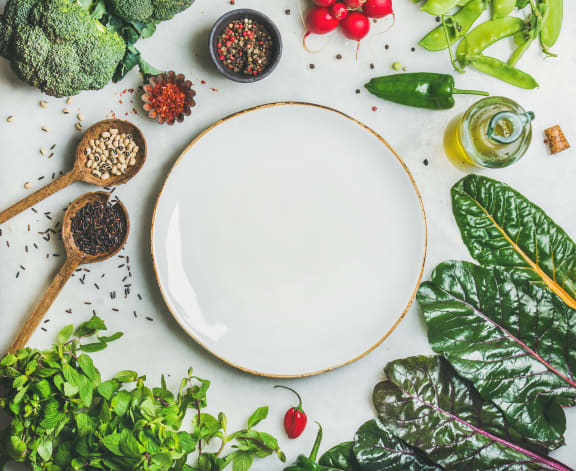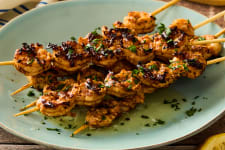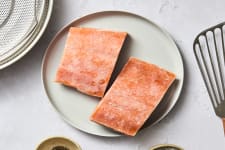Wild-caught seafood is the ideal, clean protein to enjoy in recipes that are gluten-free, dairy-free and sugar-free.
Naturally, a fillet of any wild-caught species of fish is going to be delicious roasted on a sheet pan alongside veggies, flaked into a poke rice bowl, or grilled and served over salad. But you can also make gluten-free, dairy-free, and sugar-free recipes that resemble dishes that typically contain one or more of these components, using alternative ingredients that fit your dietary restrictions.
Here are a selection of recipes that are all entirely free of gluten, dairy and sugar to help you eat in a way that best supports your health needs.
When You’d Expect to Use Gluten
Breadcrumbs come in really handy when you’re making a variety of wild-caught seafood recipes, but there are easy ways around using them if you’re a gluten-free consumer.
For instance, in many fish cake recipes, breadcrumbs are used as a binder. However, you have your pick of alternative ingredients to hold your cakes together. These salmon cakes from What Great Grandma Ate are free of gluten, dairy, and sugar, using coconut flour to bind flaked salmon together (use leftovers rather than canned salmon) with grated zucchini.
If you prefer, you can use an ingredient like almond flour instead, which will add an imperceptible sweetness to your fish cakes. Downshiftology’s recipe for salmon patties is held together with a combination of almond flour and a homemade mayo; making your mayo from scratch ensures that there’s no added sugar involved.
To replicate breading on a fillet, you can use something nutty to get that golden, crunchy exterior that you’re looking for. Slender Kitchen uses shredded coconut as the crust for skinless coho fillets that are baked over a wire rack so that you get 360 degree crispiness.
Using an actual nut like chopped almonds allows you to create a delicious crust rich in omega-3 fatty acids. Eating Well combines lemon zest and herbs with finely chopped almonds for an easy, textured topping on cod or halibut fillets.
When You’re Craving Something Creamy
Serious Eats cooks cod fillets in an aromatic coconut milk poaching liquid combined with fresh herbs, lemongrass, chilis, and fish sauce. The simple recipe is easy to make, healthy, and indulgent.
For something more complex, this Thai-inspired salmon curry is made with coconut milk, red curry paste (Thai Kitchen’s red curry paste is gluten-, dairy-, and sugar-free), and a touch of honey to balance out the dish. If you’re looking to avoid all sugar altogether, including natural sources like honey, just leave it out — the recipe is more than fine without it.
While enjoying a coconut milk-based dish is a no-brainer when you’re craving something creamy, it’s not always going to give you the flavor profile you want. For a classic take on fish chowder that’s also dairy-free and gluten-free, The Kitchn relies on pureed potatoes to both thicken the dish (many chowders use a flour-based roux) and give it a creamy texture.
When You Have a Sweet Tooth
It’s easy to avoid sugar altogether when you’re making wild-caught seafood recipes, since you’re usually making something savory that doesn’t need the addition of sugar. But for those times when you want a little sweetness to go with your savory, you don’t have to add refined sugar or cane sugar to your recipe.
With no added sugar, Amy Brandwein’s recipe for halibut is served with a sweet and sour agrodolce sauce. It gets its sweetness from soaked golden raisins, which are mixed with briny capers, vinegar, herbs, and shallots for a flavor profile that covers all the bases.
Slightly less sweet is the sauce for Robert Irvine’s crispy cod with stir-fried veggies. The sauce doesn’t contain any refined sugars but will be a little sweet from the sherry that’s added to it. Notably, the recipe is also gluten-free, using cornstarch as a thickener for the sauce and as the dredging ingredient (rather than flour) for the cod before the fillets are dipped into the fryer.
Sugar is an integral ingredient for glazes. However, you don’t have to use cane sugar — in fact, using honey or maple syrup instead will actually make your glaze more flavorful. You could make Alton Brown’s recipe for miso honey glazed fish with your eyes closed, as you’re literally mixing equal parts honey and miso together (make sure your miso paste is gluten-free) and brushing it on top of sablefish or halibut fillets, then baking until the fish is cooked through and glaze is thick and sticky. Or, try Leite’s Culinaria’s recipe for maple-soy glazed salmon.






